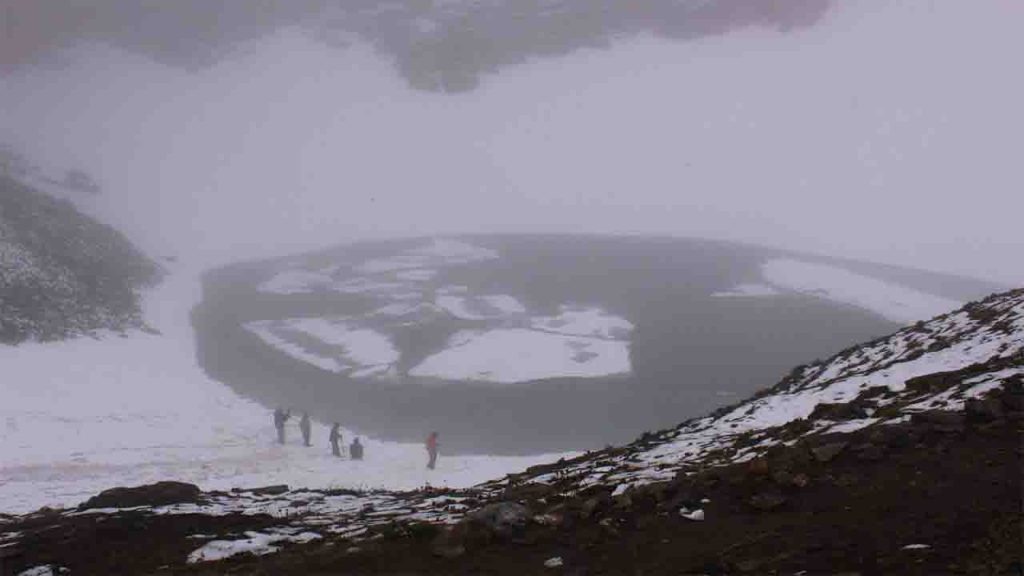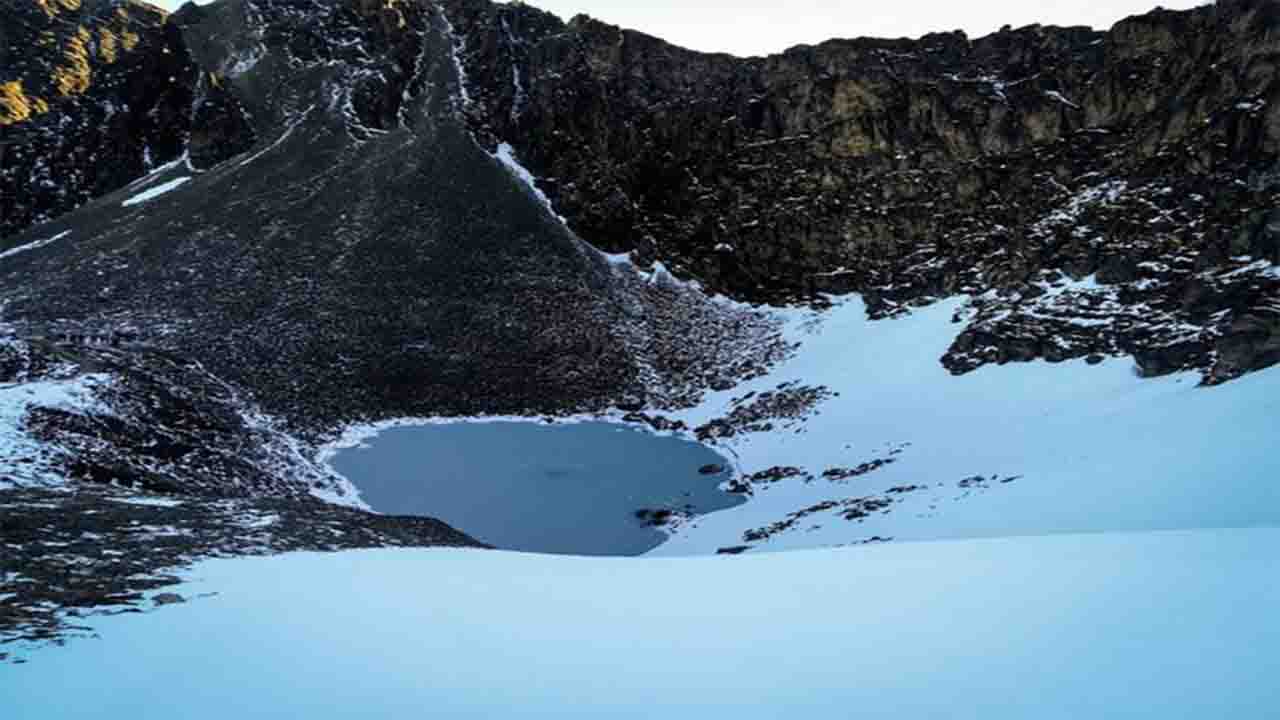In the lofty heights of the Indian Himalayas, there lies a secluded lake in a snowy valley, scattered with hundreds of human skeletons.
Perched at an altitude of 16,500 feet in the Indian Himalayas, Roopkund Lake is a frozen body of water, only 130 feet wide. Frozen for most of the year, this desolate lake holds a chilling secret—Skeleton Lake. When the ice melts on warmer days, a haunting sight emerges: hundreds of human skeletons, some eerily well-preserved with flesh, surface from the icy depths. This phenomenon raises questions about the identity of these individuals and the mysterious events surrounding them.
In 1942, H K Madhwal, an Indian forest official, made a startling discovery: hundreds of human skeletons scattered in and around Roopkund Lake. This mysterious lake, located in the frigid Himalayas, became the final resting place for an estimated 300 to 800 individuals. The discovery was not made public until the late 1950s, sparking widespread interest and leading to ongoing investigations into this macabre mountain mystery.
Initially, the skeletons at Roopkund Lake were believed to belong to Japanese soldiers or Tibetan traders who perished from either an epidemic or exposure to harsh Himalayan conditions. However, forensic analysis conducted in 2004 led to a new theory. The most plausible explanation is that a group of Indian pilgrims, accompanied by local porters, was caught in a severe hailstorm at Roopkund in the 9th century. This conclusion was drawn from the injuries on the skulls, indicating that they were struck by giant hailstones in a single catastrophic event.
Another theory suggests that Roopkund could have been a burial site for victims of an epidemic. Local folklore in the surrounding villages tells of a hailstorm created by Goddess Nanda Devi, India’s second-highest mountain revered as a deity, which killed people passing by the lake.

Previous studies on the skeletons revealed that the deceased were mostly tall individuals, above average height, and predominantly middle-aged adults, between 35 and 40 years old. There were no infants or children among them, but some were elderly women. Additionally, all the individuals were in reasonably good health.
The latest study on the Roopkund Lake skeletons revealed that the 38 individuals belonged to three distinct genetic groups and were deposited at the lake over a span of 1,000 years in multiple events. One group consisted of individuals from South Asia, whose remains were deposited between the 7th and 10th centuries in various events. Another group was identified as having eastern Mediterranean ancestry, likely originating from the island of Crete, and they perished in a single event in the 19th century. Additionally, there was one individual of South-East Asian origin, also from the 19th century. To validate these findings, the team conducted a dietary analysis, which supported the results of the DNA analysis, confirming the genetic origins of the individuals.
The Roopkund Lake site remains highly disturbed and unpreserved, with skeletons having been moved around over the years by trekkers and taken as souvenirs, posing a challenge to future accurate analysis, despite potential advances in science. The surprising findings of the 2019 study have understandably caused much intrigue. However, the more significant consideration is that if an analysis of just 38 samples out of hundreds of bodies yielded such unexpected results, what other surprises are buried in the icy grave?
As we ponder these questions, the skeletons at Roopkund Lake continue to baffle. The mystery of the dead lives on at Roopkund, leaving us in awe and wonder.








